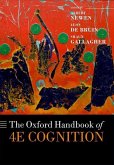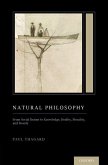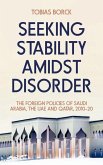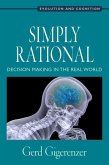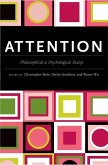Marco Piccolino, Nicholas J Wade
Galileo's Visions
Piercing the Spheres of the Heavens by Eye and Mind
Marco Piccolino, Nicholas J Wade
Galileo's Visions
Piercing the Spheres of the Heavens by Eye and Mind
- Gebundenes Buch
- Merkliste
- Auf die Merkliste
- Bewerten Bewerten
- Teilen
- Produkt teilen
- Produkterinnerung
- Produkterinnerung
In a fascinating and accessible style, Marco Piccolino and Nick Wade analyse the scientific and philosophical work of Galileo Galilei from the particular viewpoint of his approach to the senses (and especially vision) as a means of acquiring trustworthy knowledge about the constitution of the world
Andere Kunden interessierten sich auch für
![INNER LIGHT VISIONS IN VIHANGAM YOGA-CAN SCIENCE SEE WHAT EYES CAN¿T? INNER LIGHT VISIONS IN VIHANGAM YOGA-CAN SCIENCE SEE WHAT EYES CAN¿T?]() Ravi PrakashINNER LIGHT VISIONS IN VIHANGAM YOGA-CAN SCIENCE SEE WHAT EYES CAN¿T?32,99 €
Ravi PrakashINNER LIGHT VISIONS IN VIHANGAM YOGA-CAN SCIENCE SEE WHAT EYES CAN¿T?32,99 €![The Oxford Handbook of 4e Cognition The Oxford Handbook of 4e Cognition]() The Oxford Handbook of 4e Cognition194,99 €
The Oxford Handbook of 4e Cognition194,99 €![Natural Philosophy Natural Philosophy]() Paul ThagardNatural Philosophy75,99 €
Paul ThagardNatural Philosophy75,99 €![Seeking Stability Amidst Disorder Seeking Stability Amidst Disorder]() Tobias BorckSeeking Stability Amidst Disorder67,99 €
Tobias BorckSeeking Stability Amidst Disorder67,99 €![Cognition and Conditionals Cognition and Conditionals]() Cognition and Conditionals111,99 €
Cognition and Conditionals111,99 €![Simply Rational Simply Rational]() Gerd GigerenzerSimply Rational133,99 €
Gerd GigerenzerSimply Rational133,99 €![Attention Attention]() Attention184,99 €
Attention184,99 €-
-
-
In a fascinating and accessible style, Marco Piccolino and Nick Wade analyse the scientific and philosophical work of Galileo Galilei from the particular viewpoint of his approach to the senses (and especially vision) as a means of acquiring trustworthy knowledge about the constitution of the world
Produktdetails
- Produktdetails
- Verlag: Oxford University Press, USA
- Seitenzahl: 338
- Erscheinungstermin: 5. Februar 2014
- Englisch
- Abmessung: 251mm x 173mm x 22mm
- Gewicht: 830g
- ISBN-13: 9780199554355
- ISBN-10: 0199554358
- Artikelnr.: 40306039
- Verlag: Oxford University Press, USA
- Seitenzahl: 338
- Erscheinungstermin: 5. Februar 2014
- Englisch
- Abmessung: 251mm x 173mm x 22mm
- Gewicht: 830g
- ISBN-13: 9780199554355
- ISBN-10: 0199554358
- Artikelnr.: 40306039
Marco Piccolino has taught of General Physiology and Science History at the University of Ferrara, Italy, and he is now member of the Center of Neuroscience of the same University. He is a neurophysiologist who has carried out important research in the physiology of the retina by publishing his results on the main international journals (Nature, Science, PNAS). He has written several books on the history of electrophysiology and sensory physiology, which are reference books in the field (particularly Rane, torpedini e scintille with Marco Bresadola, which will soon be published in an English edition by Oxford University Press; and (with Stanley Finger) The shocking history of electric fishes: from ancient epochs to the birth of modern neurophysiology, published in 2011 by Oxford University Press). Nicholas Wade obtained his B.Sc. (1965) from Edinburgh University and his Ph.D. (1968) from Monash University, Australia. Following a postdoctoral fellowship (1969-1970) at the Max-Planck-Institute for Behavioural Physiology, Germany, he took a post at Dundee, where he has remained. His research is concerned with binocular vision, the history of vision research, and the interplay between visual science and visual art. He has published books in these areas, including: The Art and Science of Visual Illusions (1982), Brewster and Wheatstone on Vision (1983), Visual Allusions: Pictures of Perception (1990), A Natural History of Vision (1998), Perception and Illusion. Historical Perspectives (2005), The Moving Tablet of the Eye: The Origins of Modern Eye Movement Research (2005) and Circles: Science, Sense and Symbol (2007). He is also an exhibiting artist and combines his interest in the history of science and art by producing 'perceptual portraits' of figures in his field.
Introduction
Bibliographic abbreviations
1: Approaching Galileo's science through a fable
2: Subtleties of vision and of the scientific revolution
3: Casting light on Galileo's contrasts
4: The Lunar candour and the Litheosphorus
5: Sensory surprises
6: Seeing mountains on the moon
7: Visible and invisible luminous peaks of lunar mountains
8: Visual limits and the visibility of infinitesimals
9: Heavens sensed
10: Galileo's sensory philosophy
11: The problem of Galileo's predecessors
12: A moon circle: celestial reflections and illusions with Sarpi, Galileo and Castelli
13: Alternative visions
14: Galileo's visions
Bibliographic abbreviations
1: Approaching Galileo's science through a fable
2: Subtleties of vision and of the scientific revolution
3: Casting light on Galileo's contrasts
4: The Lunar candour and the Litheosphorus
5: Sensory surprises
6: Seeing mountains on the moon
7: Visible and invisible luminous peaks of lunar mountains
8: Visual limits and the visibility of infinitesimals
9: Heavens sensed
10: Galileo's sensory philosophy
11: The problem of Galileo's predecessors
12: A moon circle: celestial reflections and illusions with Sarpi, Galileo and Castelli
13: Alternative visions
14: Galileo's visions
Introduction
Bibliographic abbreviations
1: Approaching Galileo's science through a fable
2: Subtleties of vision and of the scientific revolution
3: Casting light on Galileo's contrasts
4: The Lunar candour and the Litheosphorus
5: Sensory surprises
6: Seeing mountains on the moon
7: Visible and invisible luminous peaks of lunar mountains
8: Visual limits and the visibility of infinitesimals
9: Heavens sensed
10: Galileo's sensory philosophy
11: The problem of Galileo's predecessors
12: A moon circle: celestial reflections and illusions with Sarpi, Galileo and Castelli
13: Alternative visions
14: Galileo's visions
Bibliographic abbreviations
1: Approaching Galileo's science through a fable
2: Subtleties of vision and of the scientific revolution
3: Casting light on Galileo's contrasts
4: The Lunar candour and the Litheosphorus
5: Sensory surprises
6: Seeing mountains on the moon
7: Visible and invisible luminous peaks of lunar mountains
8: Visual limits and the visibility of infinitesimals
9: Heavens sensed
10: Galileo's sensory philosophy
11: The problem of Galileo's predecessors
12: A moon circle: celestial reflections and illusions with Sarpi, Galileo and Castelli
13: Alternative visions
14: Galileo's visions



